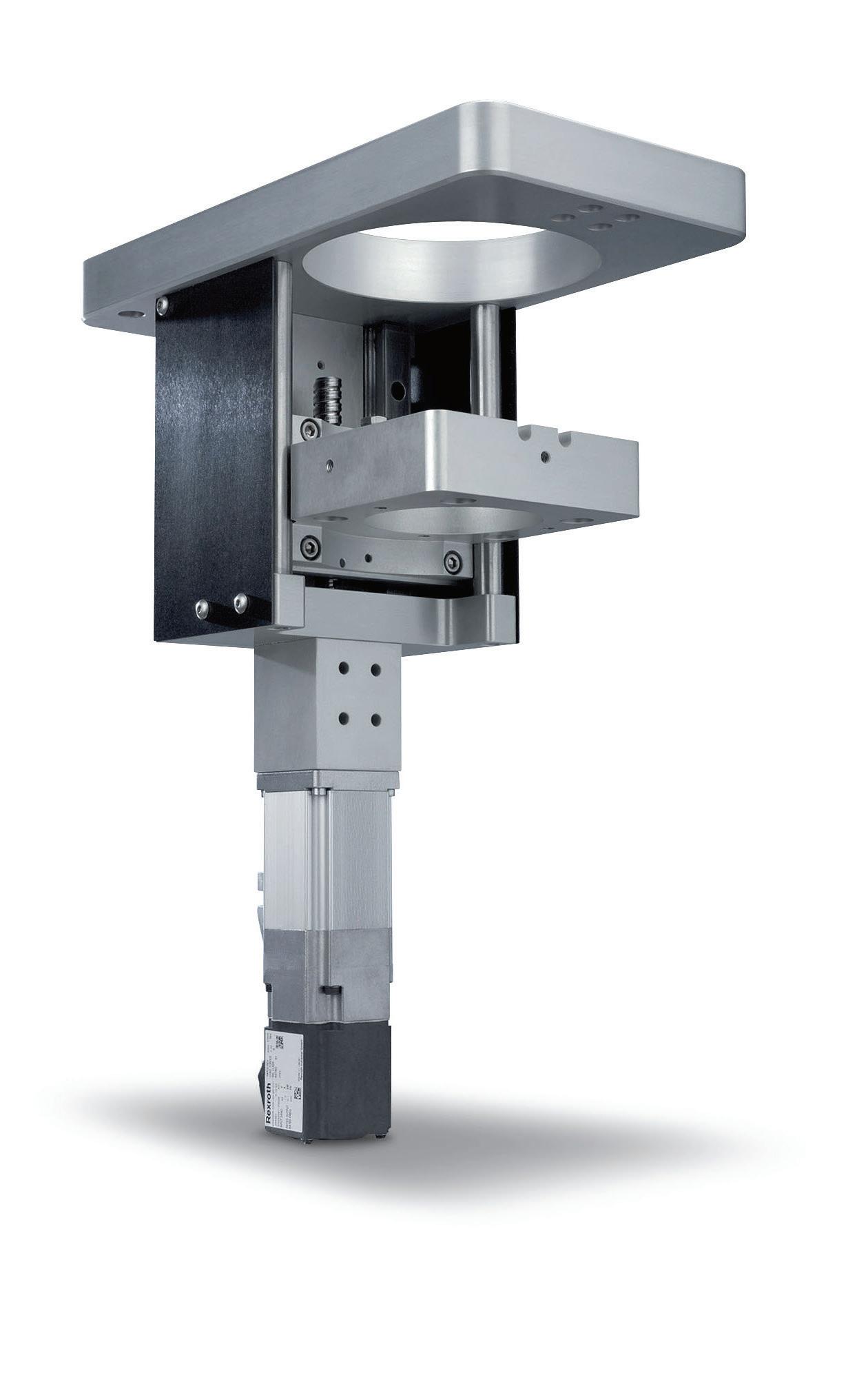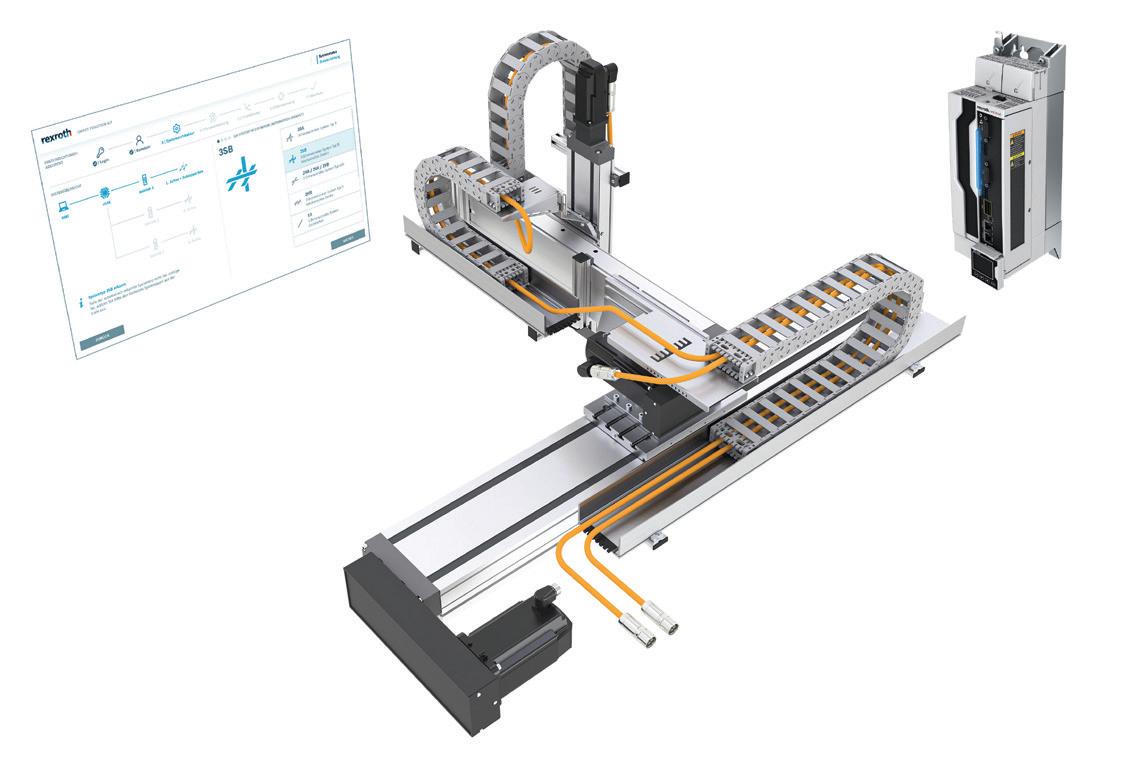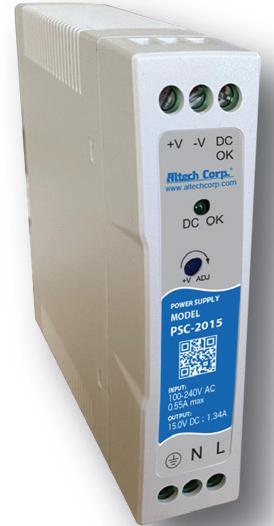
3 minute read
Design for Industry Advanced wafer transport automation improves precision and processing time
With computer chip shortages a ecting virtually every industry, semiconductor manufacturers are working rapidly to build new fabs and expand existing production lines. This increase in manufacturing capacity creates major opportunities — and challenges — for automation technology suppliers.
Consider that the typical chip production cycle takes six to eight weeks for completion. Some chips can take longer, involving 1,500 to 2,000 steps and six months to process. By some estimates, only a quarter of the processing time for a semiconductor wafer is spent in chambers — the rest is spent transporting wafers in and out of chambers and between tools or waiting for tool time.
Wafer transport requires precise, vibration-free motion to avoid damage or costly scrap. Endpoint accuracy is equally critical. Before processing can begin, the wafer must be perfectly stable and properly aligned. Any additional time required for vibration to dissipate or for the system to reach its precise position significantly impacts throughput and cost.
Tool builders can address these challenges with new controller and servo drive platforms that o er more flexibility and precision in motion control. Refined motion control techniques, such as feed-forward algorithms, predict and compensate for position and velocity conditions at the end of a motion sequence to ensure precise positioning and minimal vibration and settling time.
With an open, app-based approach, a new generation of automation controls o ers greater scalability and engineering freedom. For example, engineers who need a specific drive or controller capability can add the functionality as an app — just like adding an app on a tablet or smartphone — rather than reworking the entire automation program.
Plus, to minimize footprint and maximize performance, servo drives that combine compact, space-saving designs with performance characteristics and that minimize vibration and settling time equip tool builders with control and size capabilities to address their most critical requirements.
But high-performance wafer handling systems require more than powerful controllers and drives. The linear systems that physically move the wafer stages need equivalent precision, rigidity, and positioning accuracy. Linear motion systems used in wafer transport assemblies must have high levels of mechanical sti ness to minimize deflection and ensure high accuracy in both travel and positioning.
Ball screw drives provide superior stability and control for semiconductor tool applications. They are ultra-e cient at converting rotary motion to linear motion, o ering a unique combination of high rigidity, high precision, and fast travel speed while maintaining the necessary cleanliness.
Bosch Rexroth’s Smart MechatroniX handling system uses a “plug-and-produce” concept to simpli mechatronics development. | courtesy of Bosch Rexroth


Regarding linear guide systems, it’s essential to assess the smoothness of ball recirculation inside the bearing block as it moves along the linear guide. As the balls travel through the bearing block, even minute pulsations can adversely a ect applications requiring high accuracy. Technologies that optimize recirculation at key transition points provide extremely smooth and consistent motion as the balls circulate.
With the pressure to rapidly engineer and deliver wafer transport solutions, tool designers and builders are more frequently turning to experts in mechatronics and automation for complete, ready-to-install subassemblies. E ective subassembly development should utilize a holistic view of design rather than a serial design. Best practice is to begin by assessing the mechanics before forging ahead with the electrical and control design. Understanding how mechanical elements a ect motors and controls will help avoid problems later.
Some semiconductor fabs can improve throughput and e ciency by using new multi-axis handling and linear motor conveyance systems.

Smart mechatronic handling systems now o er a “plug-andproduce” concept to simplify mechatronics development. Online selection tools let machine builders and system integrators quickly size and select key components — linear systems, drives, motors, cabling, and more — to create a complete handling solution delivered as a single product.
These systems also come with commissioning software for automated drive recognition and utilize drag-and-drop motion sequences pre-configured for various functions, along with digital twin capabilities for programming e ciency.







For fab operations with multiple vacuum chambers, linear motor transport tools with an external noncontact motion system provide a new solution for wafer handling. Coils mounted outside the chamber provide drive power for magnetic carriers inside the chamber, o ering the precision, feedback, and control of linear motors without having cables pulled into the vacuum chamber. They also allow individual carriers to move independently for specialized processing needs. DW
Bosch Rexroth




www.boschrexroth-us.com/semiconductor-info

















